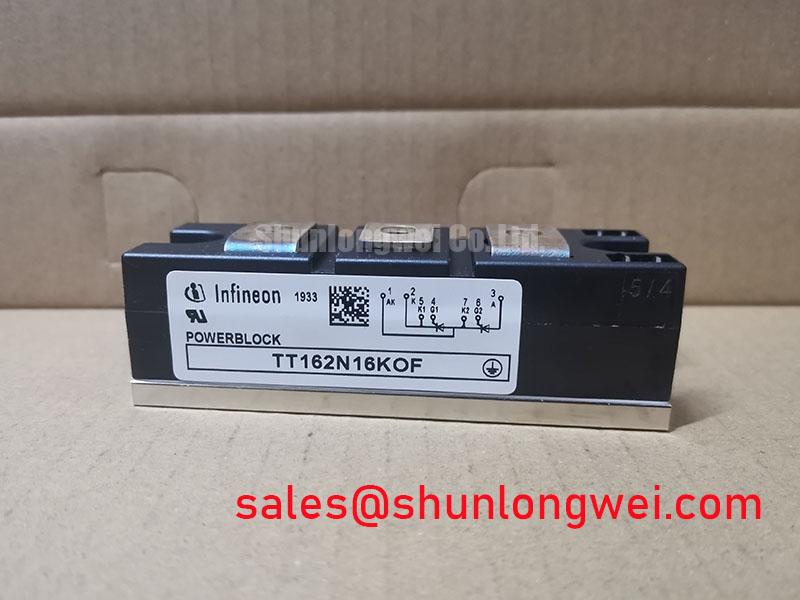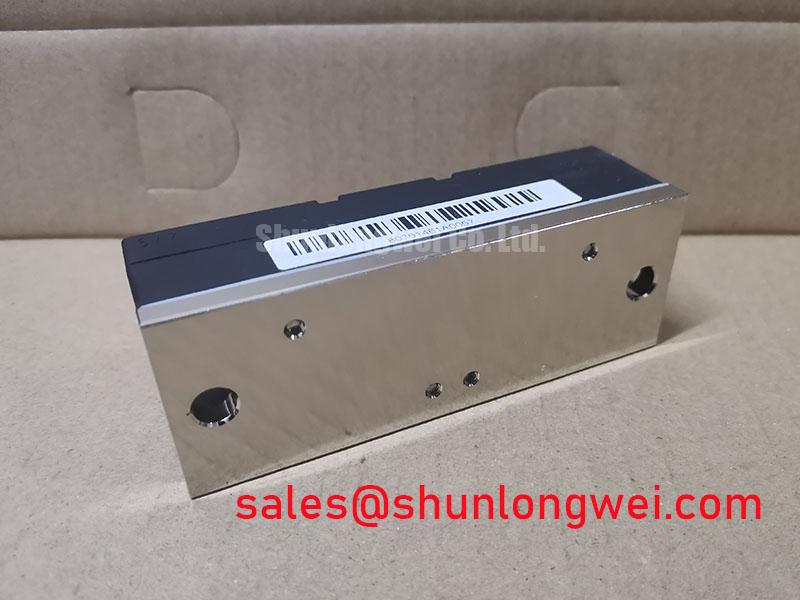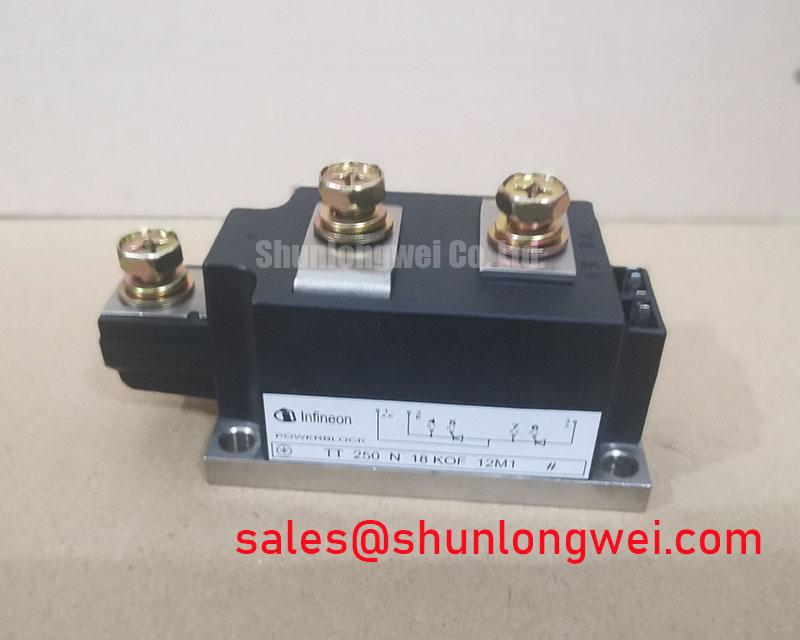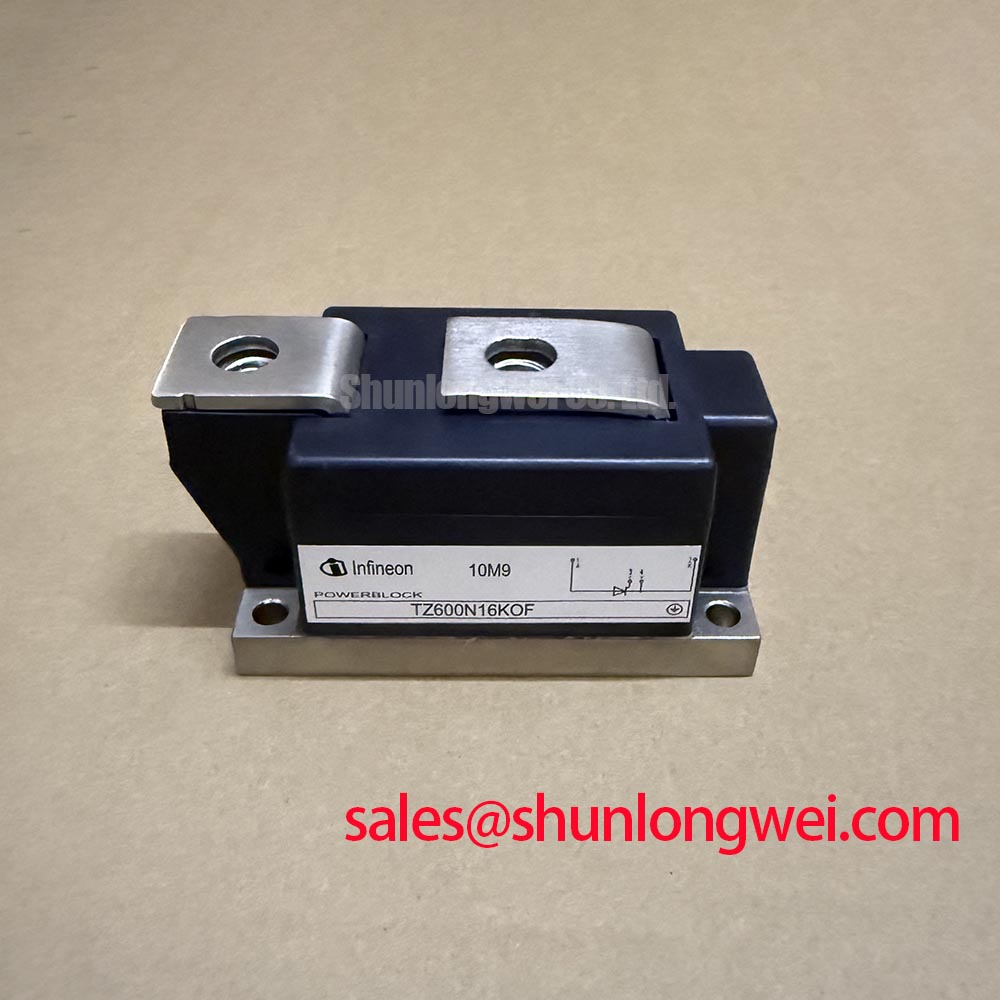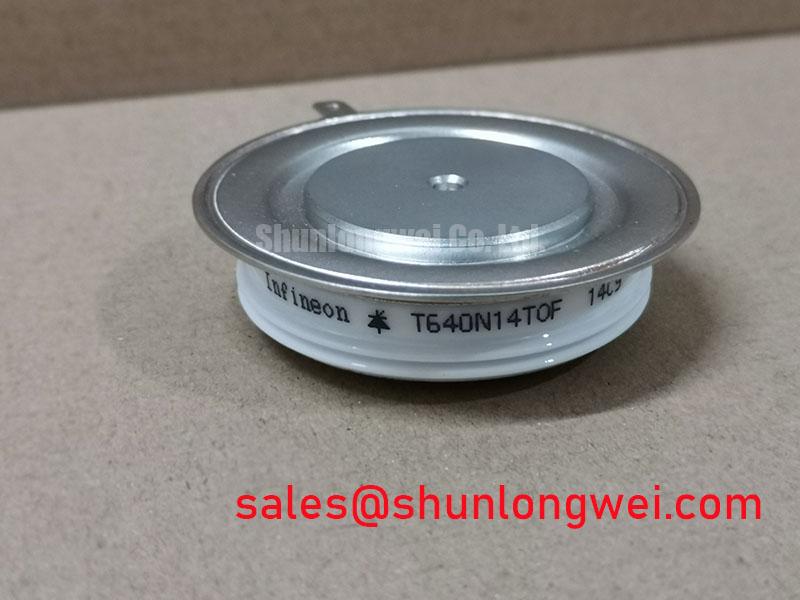Content last revised on November 14, 2025
Infineon TT162N16KOF: 1600V Module for High-Reliability Power Control
Infineon TT162N16KOF: Engineered for Thermal Endurance
The Infineon TT162N16KOF Thyristor/Diode Module is engineered for exceptional long-term reliability by leveraging pressure contact technology to master thermal cycling stress. At its core, this technology forms electrical connections through precise mechanical force rather than solder joints, directly addressing and mitigating solder fatigue—a common failure point in high-power systems subjected to frequent temperature fluctuations. This design choice fundamentally enhances the operational lifetime and robustness of power conversion systems.
- Top Specs: 1600V | 162A (ITAVM) | Pressure Contact Technology
- Key Benefits: Eliminates solder fatigue failure; Superior thermal performance.
Key Specifications: A Blueprint for Robust Design
The technical parameters of the TT162N16KOF are foundational to its performance in demanding industrial environments. Each specification provides engineers with critical data for thermal modeling, fault protection, and system integration. Understanding these values is key to unlocking the module's full potential for reliability.
| Parameter | Value | Engineering Significance |
|---|---|---|
| Repetitive Peak Reverse Voltage (VRRM) | 1600 V | Provides a substantial safety margin for operation on high-voltage industrial lines, such as 690V AC systems, ensuring resilience against voltage transients. |
| Average On-state Current (ITAVM) | 162 A (@ Th = 85°C) | Defines the continuous current handling capability under specified heatsink conditions, forming the basis for power throughput calculations. |
| Surge Non-Repetitive On-State Current (ITSM) | 3300 A (@ 10 ms, Tvj = 25°C) | Indicates exceptional robustness against fault conditions like inrush currents or short circuits, preventing catastrophic failure and enhancing system safety. |
| Thermal Resistance, Junction to Heatsink (Rth(j-h)) | 0.14 K/W (per Thyristor) | This value is analogous to the width of a pipe for heat flow; its low value signifies a highly efficient thermal path from the silicon die to the heatsink, simplifying thermal management and enabling higher power density. |
| Isolation Voltage (Visol) | 3600 V (RMS, 50 Hz) | Guarantees high dielectric strength between the electrical terminals and the baseplate, crucial for safety compliance and reliable operation in grounded systems. |
Download the TT162N16KOF Datasheet for complete specifications.
Strategic Advantages in High-Stakes Power Conversion
In industries where operational uptime is directly tied to revenue and safety, component longevity is a strategic asset. The TT162N16KOF module's pressure contact design offers a distinct advantage by significantly increasing power cycling capability. This translates to a lower total cost of ownership (TCO) through reduced maintenance schedules and fewer field failures. For designers of next-generation industrial automation, grid infrastructure, and heavy-duty motor drives, specifying components that preemptively solve wear-out mechanisms like solder fatigue is a critical step toward building more resilient and economically viable systems. This focus on intrinsic reliability supports macro-trends toward more sustainable and durable industrial equipment.
Pressure Contact Technology: The Core of Long-Term Stability
The defining feature of the Infineon TT162N16KOF is its implementation of Pressure Contact Technology. Unlike conventional modules that rely on soldered layers to connect the semiconductor die to the terminals, this design uses a precisely calibrated mounting force to establish a highly reliable electrical and thermal interface. What is the primary benefit of its pressure-contact design? Enhanced long-term reliability by eliminating solder fatigue.
During operation, power modules experience temperature swings that cause different materials to expand and contract at varying rates. In soldered modules, this repeated stress can lead to micro-cracks and eventual bond failure. By removing the solder interface from the main power path, the pressure contact design circumvents this degradation mechanism entirely. This results in a module that can withstand a significantly higher number of thermal cycles, making it an ideal component for applications with frequent start/stop or load-varying behavior.
Data-Informed Evaluation: TT162N16KOF in Context
To assist in your component evaluation process, the following table presents a factual comparison of key parameters. This data is intended to empower engineers to make informed decisions based on the specific requirements of their application, such as required blocking voltage or thermal performance.
| Feature | Infineon TT162N16KOF | SEMIKRON SKKD162/16 |
|---|---|---|
| Repetitive Peak Reverse Voltage (VRRM) | 1600 V | 1600 V |
| Average On-state Current (ITAVM) | 162 A (@ Th = 85°C) | 160 A (@ Tc = 85°C) |
| Bonding Technology | Pressure Contact | Standard Solder Bond |
| Isolation Voltage (Visol) | 3600 V | 3600 V |
For systems that require high durability under frequent thermal cycling, the thermal management benefits of a pressure contact design are a critical consideration.
Deployment Scenarios Demanding Unwavering Reliability
The unique characteristics of the TT162N16KOF make it exceptionally well-suited for power control circuits where long-term reliability and thermal cycling endurance are paramount. Its robust construction ensures stable performance in applications that push components to their operational limits.
- Industrial Soft Starters: In high-inertia motor applications, soft starters are subject to significant inrush currents and repeated thermal stress during ramp-up. The module's high surge rating and pressure contact design provide the necessary endurance for a long service life.
- Controlled Rectifiers: For battery chargers, welding power supplies, and front-end industrial rectifiers, the TT162N16KOF delivers efficient and reliable AC-to-DC conversion with the ability to precisely control the output voltage.
- AC Power Controllers: In applications such as industrial heating or lighting control, the module's thyristor pair enables phase-angle control to regulate power delivered to a load, with the reliability needed for continuous industrial operation.
For 690V industrial drives where lifetime reliability under cyclic loads is the primary design driver, this 1600V pressure contact module presents an optimal choice.
System Integration Snapshot: Optimizing a Soft Starter
A practical application highlight for the TT162N16KOF is in the power stage of a three-phase soft starter for a large industrial motor. In this scenario, three such modules would be used to control the voltage ramp-up for each phase. The pressure contact design's resilience to the thermal cycles inherent in motor starting and stopping directly contributes to the starter's overall system longevity, reducing the likelihood of premature failure and costly downtime. The high isolation voltage simplifies safety engineering, while the industry-standard housing facilitates straightforward mounting and heatsink integration. For designs requiring higher current, the related TT215N22KOF12M1 offers similar technology with an increased current rating.
Future-Proofing Your Power Stage Design
From a design perspective, selecting the TT162N16KOF is an investment in the long-term stability of the end system. Its architecture encourages a design philosophy that prioritizes intrinsic robustness over simply meeting baseline specifications. By engineering out a common failure mode at the component level, designers can allocate fewer resources to complex thermal mitigation strategies and build greater confidence in lifetime performance predictions. This allows for the development of more compact, power-dense, and reliable power converters that can operate for extended periods in challenging industrial settings with minimal intervention.
Technical FAQ for the TT162N16KOF Module
1. What is power cycling capability and why is the TT162N16KOF's design advantageous?
Power cycling capability refers to a device's ability to withstand repeated temperature fluctuations caused by changes in electrical load. The TT162N16KOF's pressure contact technology provides a significant advantage by eliminating solder layers, which are prone to fatigue and cracking under such stress, thereby greatly extending the module's operational life in cyclic applications.
2. How does the Rth(j-h) of the TT162N16KOF influence heatsink selection?
The low thermal resistance of 0.14 K/W (per thyristor) indicates very efficient heat transfer. This allows engineers to either achieve lower junction temperatures with a standard heatsink for increased reliability, or potentially use a smaller, more cost-effective heatsink while still maintaining the junction temperature within safe limits, enabling more compact system designs.
3. What is the required mounting force for this pressure contact module to operate correctly?
Proper mounting is critical for pressure contact modules. According to the datasheet, the TT162N16KOF requires a mounting force (FM) between 9 kN and 18 kN. Applying the correct, evenly distributed force using a calibrated mounting clamp is essential to ensure a low-resistance electrical connection and optimal thermal performance.
4. Can this module be used in parallel to achieve higher current ratings?
While paralleling thyristor modules is possible, it requires careful engineering. Designers must ensure matched on-state voltage characteristics (VT0) and implement strategies for current sharing, such as using reactors or ensuring symmetrical busbar layouts, to prevent one module from carrying a disproportionate share of the current. For detailed guidance, consult resources on power module application notes.
5. What is the function of the diode portion within the TT162N16KOF module?
The module contains two thyristors and two diodes, typically configured as a half-controlled single-phase rectifier bridge. The thyristors provide controlled rectification (allowing phase angle control of the output), while the diodes act as freewheeling paths or uncontrolled rectifiers, depending on the specific circuit topology, to complete the bridge circuit.

